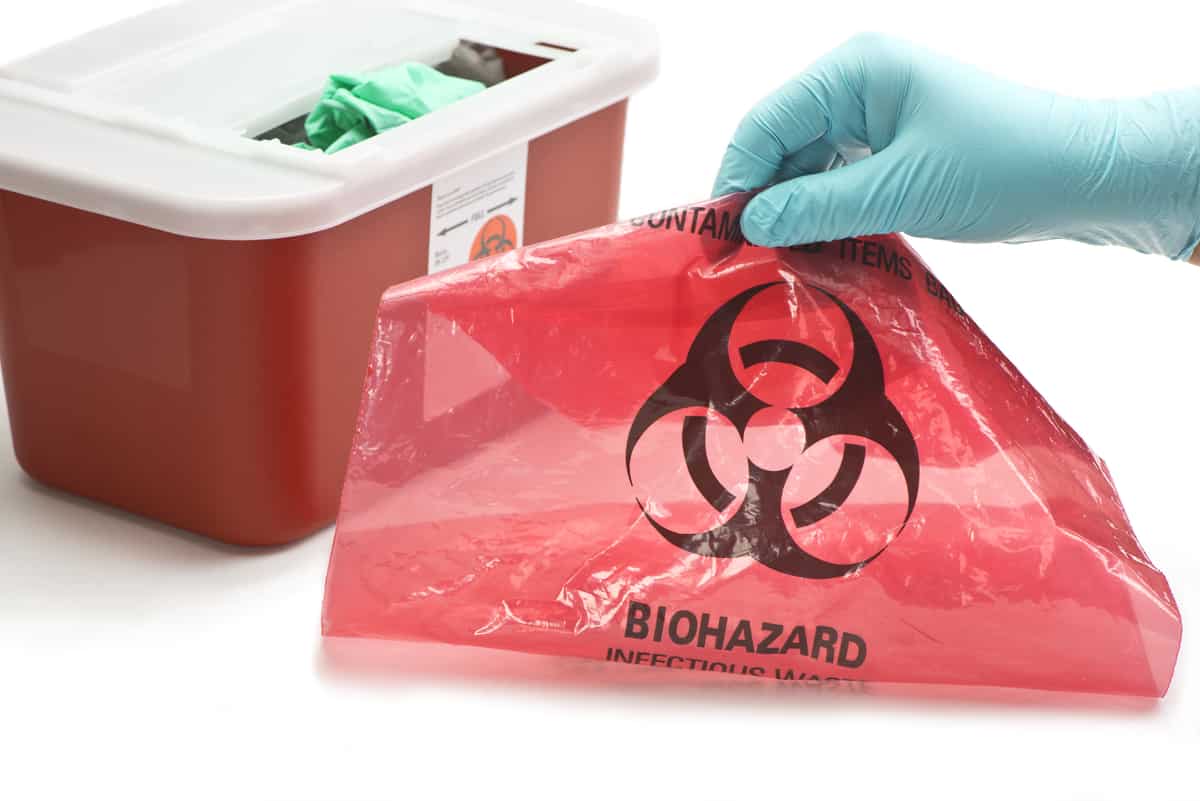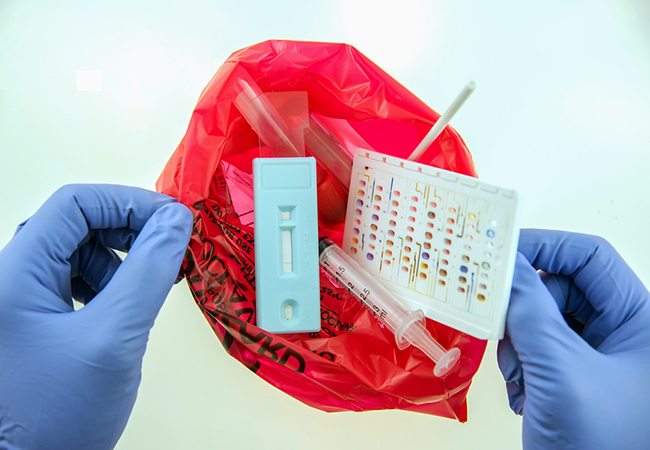Medical Waste Removal Proficiency: Where Service Quality Satisfies Health And Wellness Requirements
Medical Waste Removal Proficiency: Where Service Quality Satisfies Health And Wellness Requirements
Blog Article
Remain Ahead of Regulations: Professional Recommendations on Medical Waste Disposal
In a world where the healthcare sector is regularly progressing, it is necessary for medical centers to stay in advance of laws when it comes to the proper disposal of medical waste. From recognizing the various categories of clinical waste to carrying out the ideal collection and segregation methods, this discussion will certainly provide actionable suggestions and beneficial understandings to aid centers stay in advance of laws in the ever-changing landscape of medical waste disposal.
Understanding Clinical Waste Categories
Comprehending clinical waste categories is important for correct disposal and administration in health care facilities. Medical waste refers to any waste created by medical care activities that may position a hazard to public wellness or the environment. It is crucial to classify clinical waste properly to guarantee its risk-free handling, disposal, transportation, and therapy.
There are several categories of clinical waste that healthcare facilities require to be knowledgeable about. One of the most common groups consist of transmittable waste, pathological waste, sharps waste, pharmaceutical waste, and chemical waste. Each category has particular standards and guidelines for its correct monitoring and disposal.
Infectious waste consists of materials polluted with blood or various other physical liquids, such as handwear covers, gowns, and research laboratory societies. Pathological waste refers to human cells, organs, or body components that call for special handling and disposal. Sharps waste consists of made use of needles, syringes, and other sharp objects that can trigger injury and send infections. Drug waste comprises run out, unused, or contaminated drugs that need mindful handling and disposal. Finally, chemical waste includes solvents, anti-bacterials, and other chemical materials utilized in medical care centers.
Remaining Up-To-Date With Regulatory Changes
Staying current with governing modifications is critical for healthcare centers to guarantee compliance and correct monitoring of clinical garbage disposal. medical waste removal. With regulations constantly advancing, it is important for healthcare facilities to stay updated to stay clear of penalties, penalties, and possible harm to the environment and public health and wellness
To stay ahead of regulatory changes, medical care centers ought to develop a system for monitoring and monitoring updates. This can be done by registering for regulatory newsletters, attending seminars and workshops, and actively joining market associations. Additionally, facilities should mark a personnel or team accountable for remaining notified and disseminating info to appropriate stakeholders.
Normal interaction with regulatory agencies is also crucial. Health care centers need to establish connections with regional, state, and federal companies to guarantee they are aware of any type of changes in guidelines that may impact their waste monitoring techniques. This can be done via regular meetings, participation in public comment durations, and proactive engagement with regulatory agencies.
In addition, medical care facilities need to think about partnering with waste administration companies that specialize in clinical garbage disposal (medical waste disposal services with WasteX). These business are often well-versed in the most up to date regulations and can give support and support to ensure compliance
Executing Correct Collection and Segregation Approaches
To successfully take care of clinical garbage disposal, medical care centers have to develop appropriate collection and segregation methods according to regulatory guidelines. Carrying out these approaches makes certain the safe handling and disposal of possibly harmful materials, protects the setting, and reduces the threat of infections and injuries to medical care employees useful content and the public.
Proper collection and partition techniques involve the use of marked containers and identifying systems. Health care centers should supply plainly classified containers for different kinds of medical waste, such as sharps, contagious waste, pharmaceutical waste, and non-hazardous waste. These containers should be color-coded and plainly marked to prevent confusion and advertise easy recognition.
Furthermore, healthcare centers need to train their personnel on the correct treatments for accumulating and setting apart medical waste. This includes educating them on the various sorts of waste, the suitable containers to use, and the relevance of complying with guidelines and policies. Routine training sessions and correspondence course should be carried out to make certain that personnel members stay updated on best methods.
Furthermore, medical care centers ought to establish a system for routine collection and disposal of clinical waste. This might include partnering with qualified waste administration companies that focus on medical garbage disposal. These business will certainly make certain that the collected waste is delivered and taken care of in conformity with regulatory demands.
Picking the Right Disposal Techniques

Incineration is just one of the most effective and usual approaches for disposing of particular sorts of clinical waste, such as pathological waste and sharps. It entails the regulated combustion of waste at heats, lowering it to ash. Incineration can release dangerous pollutants into the air and add to air contamination.
Chemical treatment entails the use of chemicals to reduce the effects of the waste and sanitize. Microwave therapy makes use of microwave energy to heat and decontaminate the waste.
Making Sure Compliance Via Paperwork and Training
After meticulously thinking about the appropriate disposal techniques for medical waste, health care centers should guarantee compliance with guidelines and minimize ecological influence by carrying out effective documents and training treatments. This action is crucial in maintaining a risk-free and lasting setting for both healthcare employees and the public.

Training is similarly essential in ensuring compliance with laws. Medical care employees who deal with medical waste ought to obtain suitable training on waste partition, dealing with, and disposal treatments. This training needs to cover subjects such as the correct why not check here use of individual safety tools, identification of various kinds of waste, and the correct disposal approaches for every waste group. By giving detailed training, healthcare centers can encourage their team to make enlightened decisions and minimize the risk of incorrect garbage disposal.
Conclusion
In verdict, staying ahead of policies in clinical garbage disposal is critical for medical care centers. medical waste removal service. Understanding the various categories of medical waste, remaining upgraded with regulative modifications, applying proper collection and partition approaches, picking the appropriate disposal approaches, and making sure conformity via documents and training are all crucial steps. By following these standards, health care organizations can effectively take care of and dispose of clinical waste in a liable and secure manner
From understanding the different categories of clinical waste to executing the best collection and segregation methods, this discussion will certainly provide workable pointers and valuable insights to aid centers stay ahead of policies in the ever-changing landscape of clinical waste disposal. - medical waste disposal services with WasteX
The most common categories include infectious waste, pathological waste, sharps waste, pharmaceutical waste, and chemical waste. Healthcare facilities must provide plainly identified containers for various types of clinical waste, such as sharps, contagious waste, pharmaceutical waste, and non-hazardous waste. Healthcare centers need to establish a comprehensive system to tape-record and track all facets of clinical waste disposal, consisting of kinds of waste generated, amounts, and disposal approaches made use of. Medical care workers who take care of medical waste should obtain suitable training on waste segregation, taking care of, and disposal procedures.
Report this page